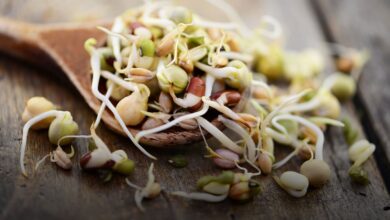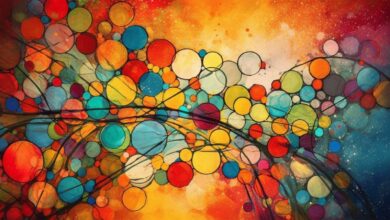Muscle spasms or spasms: causes and treatments

Muscle spasms are sudden, intense, uncontrollable muscle contraction. It is painful and frustrating, and can stop a person exercising or wake them up in the middle of the night.
Also called muscle spasm, muscle spasm occurs when muscles become tired and unable to relax. Stretching is the best medicine, and regular exercise and a healthy lifestyle can help prevent it.
Contractions during menstruation cause the same discomfort as muscle spasms, but for a different reason.
To reduce these cramps, doctors may suggest certain medications or contraceptives, but severe or persistent cramps may be a sign of a more serious health problem.
What causes exercise cramps?
Muscle spasms during physical activity can be debilitating, so it's no wonder people do their best to avoid them. The sports world is full of “secrets” for avoiding cramps, from Epsom salt baths to drinking pickle or mustard juice, most of which are ineffective.
So what causes these muscle spasms during or after exercise? Researchers hypothesized that exercise-induced cramps could be caused by electrolyte imbalance or dehydration, but this was mostly based on anecdotal data.
Many experts agree that the strongest scientific evidence suggests that muscle spasms occur due to poor communication between the tendon that controls the muscles and the nervous system.
According to a study conducted in 2009 by Dr. Martin Schwelnosprofessor and sports medicine physician at the University of Pretoria in South Africa, is likely to misunderstand that exercise-related muscle spasms are the result of muscle fatigue.
Muscles are constantly communicating with the nervous system, telling it whether they are stretching or contracting. When a muscle fatigues, signals between the tendon and the central nervous system become distorted.
Instead of signaling that the muscle should contract and then relax, the central nervous system sends more messages to the muscle to continue contracting. The relaxation signal does not arrive and muscle spasms occur.
According to studies Malcolm Collinsa researcher in the Department of Human Biology at the University of Cape Town in South Africa, says if you suffer from muscle spasms, you may have a genetic predisposition based on the type of collagen found in your tendons.
You will also be more likely to suffer from cramps during exercise if you have tendon or ligament injuries.
Best way to relieve cramping? Vigorously stretch the painful muscle. This prevents the muscles from contracting and allows signals to be received to relax.
The easiest way to avoid cramps during and after exercise is to avoid overtraining.
Several studies have found that athletes with spasticity often run faster than normal.
Exercising in hot or humid weather is particularly tiring and causes muscles to weaken faster. Staying hydrated and making sure your body is in good physical condition for exercise will also help you avoid fatigue that causes cramps.
Cramps during sleep
Statistics and risk factors
For many people, muscle cramps do not occur during physical activity, but in the middle of the night, and the pain can be excruciating.
According to a study, it can occur every night in 5 to 10% of the population(1).
This does not improve with age… According to another study, 37% of those over the age of 60(2) Suffer from leg cramps (at least once every two months), with 40% experiencing more than three attacks per week.
Therefore, this disorder is more common in older people and people with other health problems, such as high blood pressure, diabetes, or poor cardiovascular health.
People who have trouble sleeping are also more likely to experience leg cramps during sleep.
How to relieve and prevent night cramps?
Once you have a cramp, it can always be relieved by stretching the muscles, that's the key!
To prevent night cramps, stretching your leg muscles before bed has been shown to help some medicine Prescriptions are more or less effective in preventing and treating these spasms. But the best treatment is a better lifestyle.
Menstrual cramps
Unlike sports-related cramps or night cramps, menstrual cramps are not related to general health or physical exertion. Rather, it is a painful and sometimes disabling side effect of the uterus contracting to expel tissue that has built up to support a potential pregnancy as part of the menstrual cycle.
Menstrual cramps result from a different mechanism than muscle cramps and therefore require different treatment.
Paracetamol or NSAIDs can relieve these spasms by directly or indirectly reducing muscle contractions of the uterus.
For people whose menstrual cramps are not relieved by painkillers, oral contraceptives may be the solution because they limit the growth of the uterine lining in the first place. With less loss of the uterine lining, the risk of cramping is reduced.
If menstrual cramps are very painful and do not respond to pain relievers or hormonal contraceptives, they may be the result of an underlying condition such as endometriosis or uterine fibroids. In this case, it is recommended to consult a doctor.
Muscle spasms or spasms: causes and treatments


